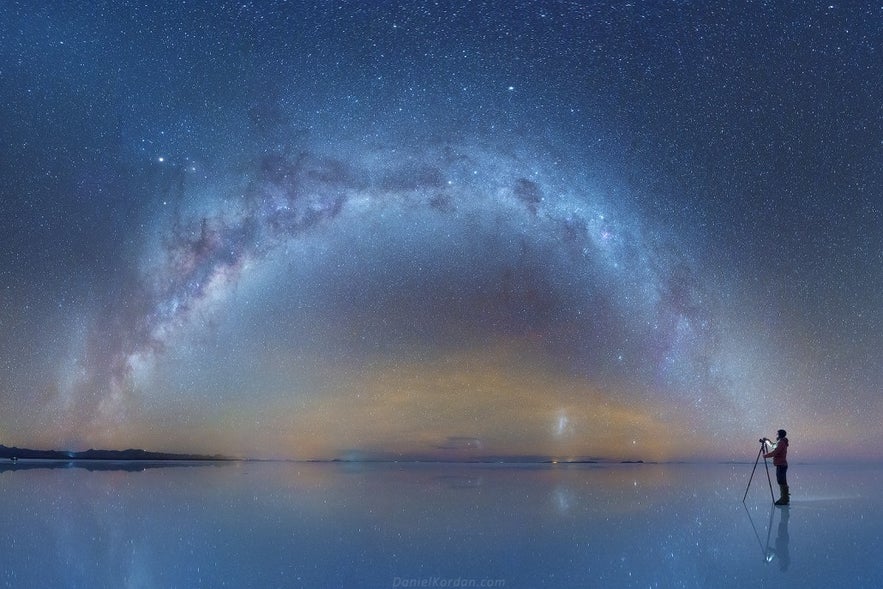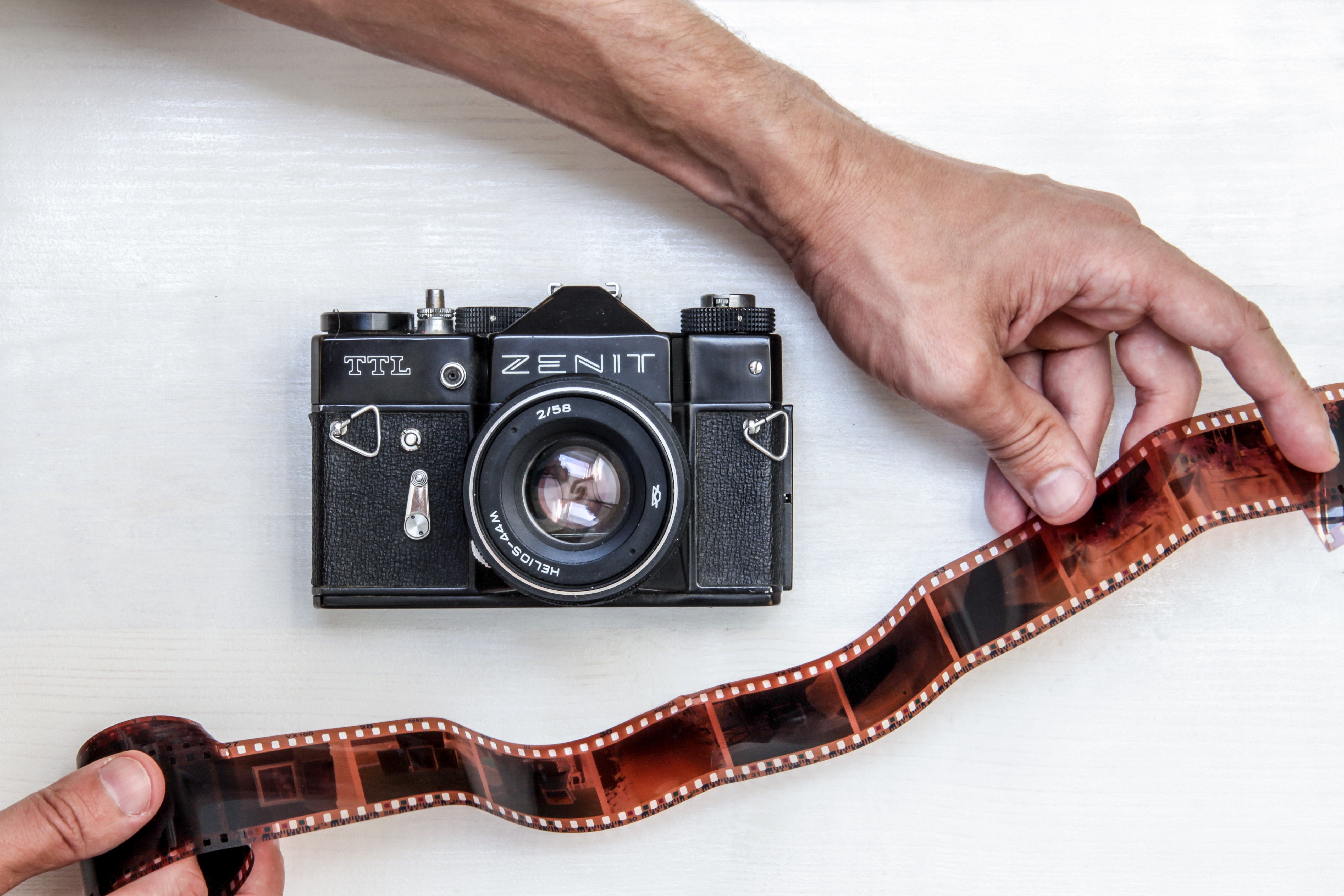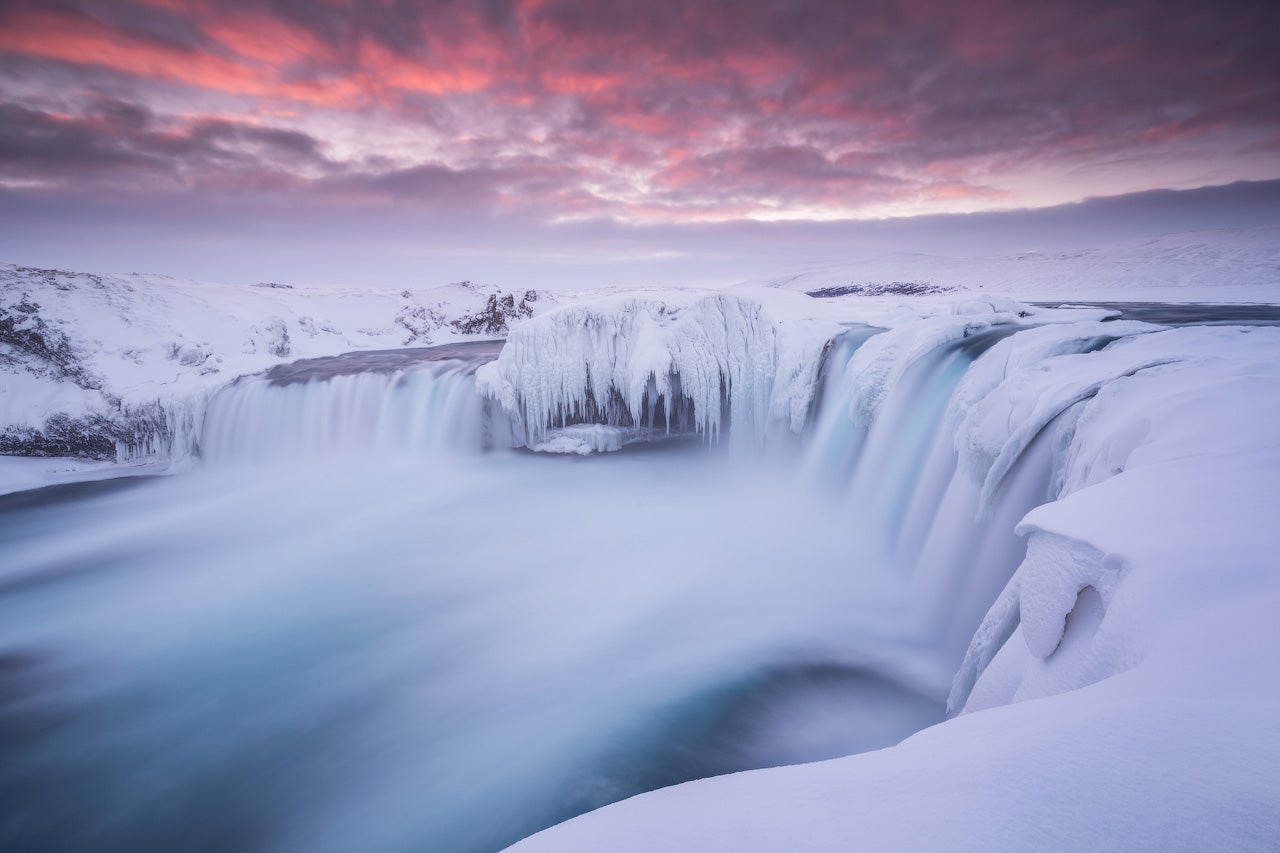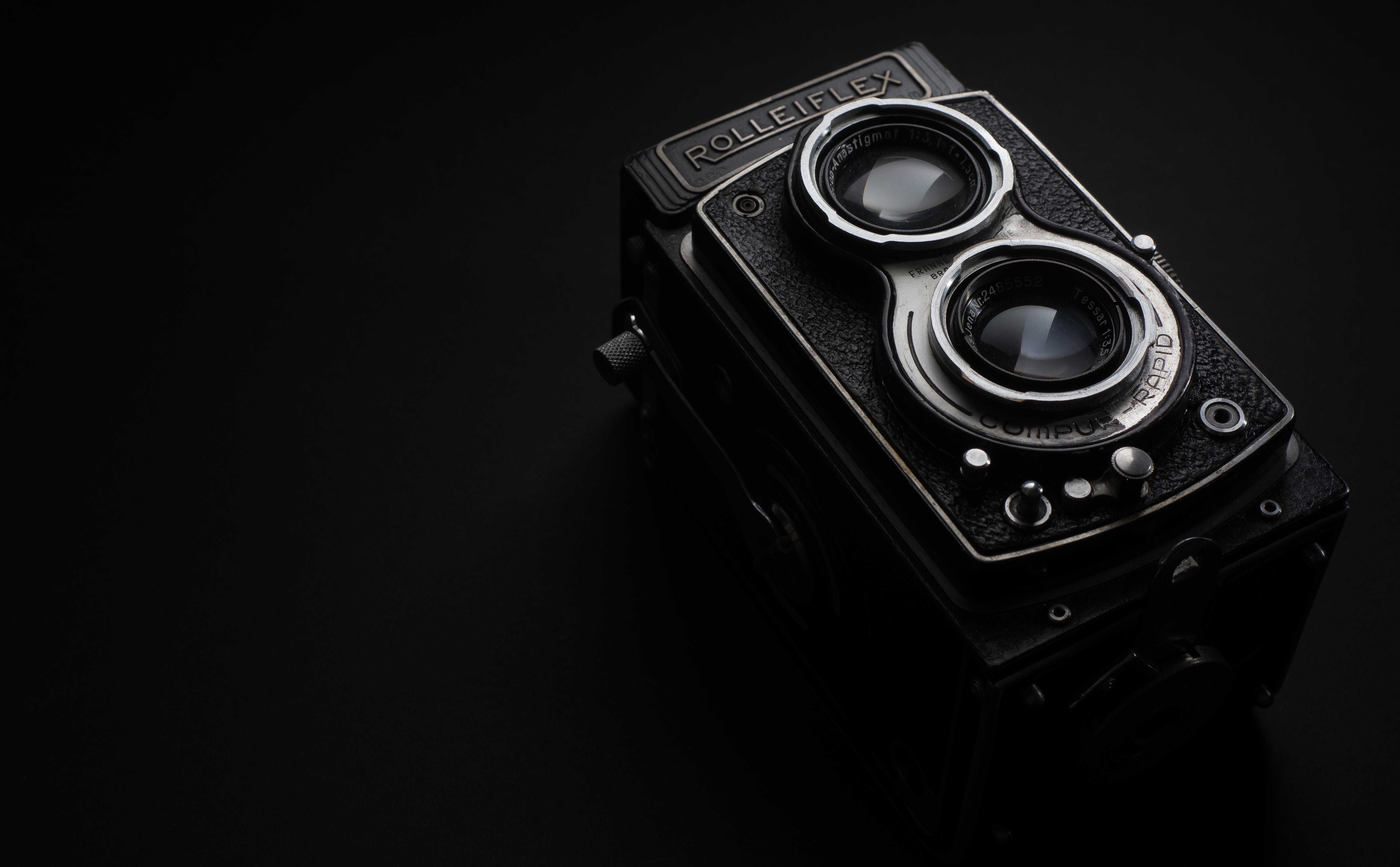
Camera technology is always improving. As landscape photographers, we find ourselves keeping a constant eye on the market for new developments and gear that may be useful to help us realise our creative ideas.
- Check out these Camera and Gear Reviews
- See The Best Camera Gear Recommendations for Photography in Iceland
With so many brands and models of cameras out there these days, it can be difficult for those of us who are just making our first purchase to know where to start. Even for people who are seeking to upgrade their current equipment, the information floating around about cameras and their features can be a little confusing to put together when making comparisons.
We’ve come across all different kinds of cameras during our photography workshops and tours, some of which have been great for landscape photography and others which haven’t performed so well. So to give you every chance of success while avoiding disappointments in-field, we’ve put together this detailed guide to the best cameras for landscape photography on the market today.
- See also: The Best Lenses for Wildlife Photography
What to Look for in a Camera
When it comes to picking a camera for landscape photography, there are some important features and specifications to look for which may have a large impact on the photographs that you’re able to produce.
 Picking a camera for landscape photography can be a difficult decision. Photo by: 'Evan Amos, Wikimedia Commons'.
Picking a camera for landscape photography can be a difficult decision. Photo by: 'Evan Amos, Wikimedia Commons'.
Camera Resolution
In digital photography, camera resolution affects the size at which we can print our images, the quality of our photos after cropping and resizing, as well as how our work will look when displayed on a screen.
You’ll often hear the ‘megapixel’ word being thrown around, which is how camera resolution is measured. The higher the resolution, the more information that will be recorded with an image. This means that you’ll be able to produce larger images with more detail, which is a great thing for printing.
With landscape photography, it’s generally a good thing to have more resolution but that doesn’t mean that you need the highest resolution camera available on the market in order to produce beautiful images. Instead, consider how you’ll be using your photographs – will you be printing photos, calendars, artwork for your walls, or a giant billboard? Are you hoping to display them online only and if so, will they be viewed on HD, 4K or 8K screens? Do you do a lot of cropping and resizing of your images, or are you generally able to get the composition that you want without having to crop the frame?
Decide what you want to do and then match the camera resolution with your specific needs.
 It's a good thing to have more resolution for landscape photography. Photo by: 'Photo Mix, Pixabay'.
It's a good thing to have more resolution for landscape photography. Photo by: 'Photo Mix, Pixabay'.
Sensor Size & Dynamic Range
The sensor is one of the key components of all digital cameras. Digital cameras tend to come with either a cropped or full-frame sensor. A full-frame sensor has a chip that is roughly the size of a 35mm film frame (about 36 x 24 mm), whereas the sensor in a cropped camera is often much smaller. Camera manufacturers such as Fujifilm have taken it a step further by introducing medium-format sensors, which are even larger than full-frame.
Due to the smaller size of a cropped sensor, the focal length of the lenses that you use will be multiplied. The multiplication factor differs between camera manufacturers, though can range from 1.3x to 1.6x. For example, mounting a 16mm lens onto a crop sensor camera with a 1.6 multiplication factor will create images with a field of view similar to having a 24mm lens in use with a full-frame camera. This is something that you will need to take into account while you’re shooting landscapes in-field.
It’s also important to know that most camera brands have a separate line of lenses for use specifically with cropped frame cameras, so if you ever decide to upgrade to a full-frame camera, the lenses may be incompatible.
Generally, the larger the sensor, the better the image quality. In addition, larger sensors are able to capture more dynamic range – that is, higher levels of detail, tones and contrast within the scene – with a lower level of noise, which is exactly what we want in landscape photography.
For example, during moments like sunsets and sunrises, the dynamic range of a scene can be extremely large. There may be extremely bright areas around the sun, while the rest of the landscape may be strewn in dark shadows. This is when the dynamic range of a camera sensor becomes the key to being able to produce a single image that has enough detail in the tones to forgo bracketing.
As you can see, the sensor size and dynamic range are of utmost importance in landscape photography. More often than not, landscape photographers opt to shoot with a full-frame camera, with medium-format being more of a luxury.
ISO Range
Unlike other genres of photography, such as street or sports, landscape photography usually doesn’t rely on being able to shoot at faster shutter speeds. Rather, photographing the landscape is often a slow process with the camera mounted onto a tripod, meaning that we can often use the lowest minimum ISO value when shooting in the great outdoors.
Cameras that have the capability of ISO 100 or lower are of great benefit for minimising noise in landscape work, while a higher ISO range with minimal noise is perfect for night photography, when we want to capture the Northern Lights, Milky Way, moon or stars.
Live View
Back in the olden days of landscape photography, the only way to compose and frame a shot was to use the optical viewfinder. These days, the process is made much easier by the development of Live View.
Live View is a function which allows you to preview your composition, adjust the focus and dial in your exposure, all with live feedback on your camera’s LCD screen. It’s an essential tool to many landscape photographers, as it allows you to work with much more precision. As such, it’s best to choose a camera that has this function, rather than one that doesn’t.
Weather Sealing
Most of us will end up travelling to incredible destinations all around the world for landscape photography. In some places, we’ll be faced with harsh weather conditions, such as rain, wind and snow. There may even be times when we come face-to-face with a little sea spray at the coast or even have to battle getting wet in a wave.
Having a weather-sealed camera that can cope with the extremes is an important factor in being able to stay out in the elements to capture the perfect shot. The last thing that you want is to have to end a shoot early.
The Best Cameras for Landscape Photography
While we all want the latest gear on the market, what is most important to remember is that you should shoot with the best camera that will match your needs whilst staying within your budget.
Landscape photography requires a camera with a unique set of specifications, such as being weather-sealed with high resolution, good dynamic range and a useful LCD. Long battery life is also critical in ensuring that we can stay out for lengthy periods in-field.
Taking into account all of the features that we’ve mentioned above, here are our top 5 cameras for landscape photography in 2019.
#1. Nikon D850
The Nikon D850 is a professional, high-end digital camera that truly stands out amongst others on the market today. It is built for rugged conditions with a weather-sealed body that is suitable for travelling to even the harshest of climates.
 Nikon D850. Photo by: 'Wolfgang Moroder, Wikimedia Commons'.
Nikon D850. Photo by: 'Wolfgang Moroder, Wikimedia Commons'.
With its 45.7 megapixel resolution and stunning dynamic range, this full-frame camera offers the ability to shoot at a low minimum ISO of 64, allowing for significant recovery of shadows even when you’re photographing in areas of total darkness. In addition, you can recover up to 2.5 stops of blown-out highlights from your shots, making it a great all-round camera that excels in low-light.
What’s great is that it features a tilting LCD, giving you the opportunity to see what’s in your frame with Live View even when shooting at difficult or low angles. Another excellent feature is its specialised recording mode for focus stacking.
The Nikon D850 is a wonderful little hybrid, blending both still image and video capabilities to produce 8K time-lapses using the Interval Timer Mode and 4K time-lapse movies in-camera.
Key Specifications:
-
Matrix resolution 45.7 MP (8256х5504)
-
Matrix physical dimensions 36х24 mm
-
Low limit ISO 64, extended low limit ISO 32 point
-
Shutter is 30 seconds – 1/8000s
-
Shooting speed 9 frames per second
-
Rotating LCD screen (1229000 pixels)
-
Video recording 4К
-
Interface USB 3.0
-
Protected metal body
-
Weighs 1005g
The Canon EOS 5DS R is a full-frame camera that features a massive 50.6 megapixels, which is the highest pixel count of any camera available today. This means that it is perfect for making large prints of your landscape photography and cropping images without any significant loss of quality.
 Canon EOS 5DS R. Photo by: 'Wei Wei, Wikimedia Commons'.
Canon EOS 5DS R. Photo by: 'Wei Wei, Wikimedia Commons'.
Unlike its sister-model, the 5DS, it has improved sensor sensitivity to detail as a result of its inbuilt low-pass cancellation filter, resulting in increased image clarity and sharpness.
As with most Canon digital cameras, the 5DS R handles well ergonomically with well-considered button placement and configurations that may be adjusted in the settings.
However, while it’s perfect for capturing still photographs of the landscape, it lacks in its video recording capabilities, being without HDMI output or headphone sockets.
Similar to the Nikon D810, Canon’s 5DS R is built to withstand tough conditions. Constructed from magnesium alloy, this camera features outstanding weather sealing and has great battery life, making it a good choice for landscape photographers.
Key Specifications:
-
50.6MP Full-Frame CMOS Sensor
-
Canceled Low-Pass Filter (LPF) Effect
-
Dual DIGIC 6 Image Processing Engines
-
50MP Photos / Full HD Videos at 30fps
-
ISO Sensitivity Range of 100 – 6400 (50 – 12800)
-
61-Point (41 Cross-Type) AF System
-
Continuous Shooting Rate of up to 5fps
-
3.2″ 1.04m-dot Rear Screen LCD Monitor
-
Weighs 845.1g (29.81 oz)
#3. Sony A7R III
The Sony A7R III is perhaps the best mirrorless camera on the market today. At 657g, it is compact and lightweight, making it a great option for travelling as you’ll be able to carry it for longer distances when you’re out and about in nature.
 Sony A7RIII. Photo by: 'Albert Dros'.
Sony A7RIII. Photo by: 'Albert Dros'.
This full-frame camera has a resolution of 42 megapixels though where it really excels is with its wide 15-stops of dynamic range and backlit sensor, resulting in less digital noise, better results in low-light, and incredible images when shooting high contrast scenes.
Unlike its predecessor, the A7R II, this camera is weather-sealed so it’s great for shooting in extreme weather conditions.
Key Specifications:
-
42.4MP Full-Frame Exmor R CMOS Sensor
-
BIONZ X Image Processing Engine
-
42MP Photos / UHD 4K Videos at 30p
-
ISO Sensitivity Range of 100 – 25600 (50 – 102400)
-
399-Point Fast Hybrid AF System
-
Continuous Shooting Rate of up to 10fps
-
5-Axis SteadyShot INSIDE Stabilization
-
3.0″ 1.44m-dot Tilting Touchscreen LCD
-
3.69m-dot Tru-Finder OLED Electronic Viewfinder
-
Weighs 582g (20.52 oz)
#4. Fujifilm GFX 50S
The Fujifilm GFX 50S is a medium-format mirrorless camera with a high-resolution 51.4 megapixel Sony-made sensor and exceptional 14-stop dynamic range. It is well-designed and ergonomic with logical placement of functions.
 Fujifilm GFX 50S. Photo by: 'Esquilo, Wikimedia Commons'.
Fujifilm GFX 50S. Photo by: 'Esquilo, Wikimedia Commons'.
The unprocessed RAW files are quite large, at around 110 megabytes in size. A lot of information is captured, meaning that you’ll have a lot of room for post-processing crops and other adjustments.
The Fujifilm GFX 50S is fairly light and compact for a medium-format camera, making it an attractive camera of its kind for landscape photography. It has great advantages for landscape photography, being completely weather-sealed with splash-proof lenses and a removable electronic viewfinder to make it even more travel-friendly.
However, due to its high resolution and large sensor, you will more often than not benefit from shooting with a tripod rather than handheld, so as to reduce camera shake and blurriness.
Key Specifications:
-
51.4MP medium format CMOS sensor (43.8 × 32.9mm) with Bayer filter array
-
3.69M-dot OLED Removable EVF
-
3.2" 2.36M-dot touch LCD tilts horizontally and vertically
-
AF-point-selection joystick
-
3 fps continuous shooting
-
1080/30p video capture
-
Dual SD card slots (UHS-II)
-
USB 3.0 socket
-
Wi-Fi
-
Weighs 739g (26.1 oz)
#5. Pentax K-1 II
The Pentax K-1 II is an impressive full-frame camera for landscape photography, with a 36 megapixel sensor and good image quality.
It has numerous features that stand out for night and astrophotography, so it’s a great option for photographing the Northern Lights, the stars or the Milky Way. Some of these features include:
-
Astrotracer, which allows the camera to take extended exposures of up to 5 minutes with pinpoint stars and no star trailing.
-
Small LED lights that illuminate various parts of the camera body, making it easy to work with in darker conditions.
-
Red ‘night vision’ LCD setting, which helps to preserve your vision in the dark.
-
Pixel Shift function which improves sharpness and micro-contrast for fine details.
In addition, the camera is sturdy and made of weather-resistant metal alloy. It has a convenient LCD screen that tilts, is ergonomic to use and performs extremely well in low-light. Plus, it has a built-in time-lapse mode that allows for in-camera stacking and 4k video output.
 Pentax K1 II. Photo by: 'Jörgens.mi, Wikimedia Commons'.
Pentax K1 II. Photo by: 'Jörgens.mi, Wikimedia Commons'.
Key Specifications:
-
36.4MP Full-Frame CMOS Sensor
-
ISO range 100-819,200
-
Sensor-shift and dynamic pixel shift shake reduction
-
In-Camera RAW image editing
-
Pentaprism finder
-
3.2-inch 1037k dot resolution tilt-out LCD monitor
-
33 point AF with 25 cross-type focus points
-
4.4fps burst rate; Intervalometer
-
GPS, Electronic Compass, WiFi
-
Weighs 925g (32.63 oz)
Which Camera Should I Buy?
We’ve shared with you our top 5 cameras for landscape photography but there are many other cameras on the market today. Before you invest in a new digital camera, be sure to do your research and ensure that your camera equipment will suit your needs as a landscape photographer. After all, a camera may have all the best functions in the world but its capabilities will always be tied to the skills of the person who uses it.
About the author: Serena Dzenis is a landscape photographer based in Iceland. You can find more of her work on her website or by following her on Facebook and Instagram.
What camera do you use for landscape photography and why? What do you like about it and where do you think it could improve? Let us know in the comments section below!












